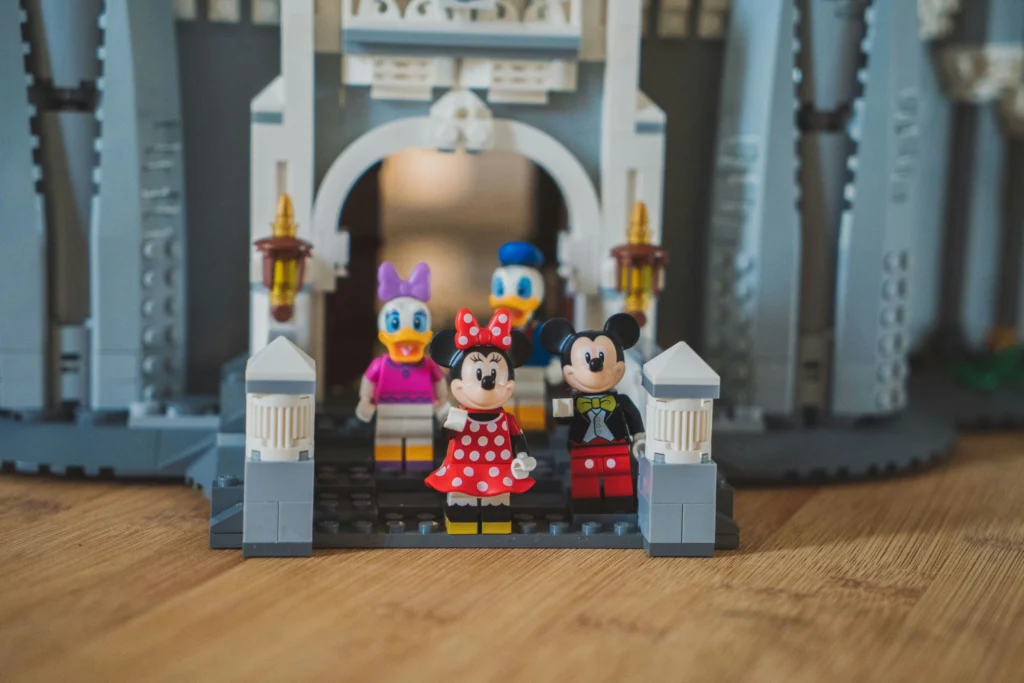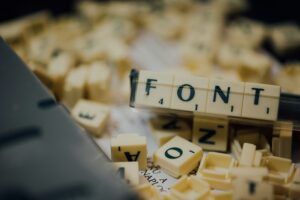
Disney animated features are known for their timeless storytelling, breathtaking animation, and attention to detail. One often overlooked aspect of these movies is the typography. The fonts used in Disney’s animated features play a significant role in setting the tone, conveying the mood, and supporting the overall aesthetics of each film. From classic fairy tales to modern adventures, Disney has a unique approach to choosing fonts that align with the themes of their stories. This article delves into the role of fonts in Disney animated features, exploring iconic examples, the evolution of typography, and the impact fonts have on the overall narrative experience.

Fonts in Disney movies are not just aesthetic choices; they are carefully selected to complement the story being told. Typography has the ability to evoke specific emotions and create associations with the film’s setting, time period, or genre. Whether it’s a bold and playful font for a whimsical story or an elegant and refined font for a classic tale, typography helps to guide the viewer’s perception and engagement with the narrative.
For instance, the use of Gothic fonts in “Sleeping Beauty” instantly transports the audience to a medieval setting, while the playful and rounded typefaces in “Toy Story” convey the fun and lightheartedness of the film. This intentional use of fonts ensures that the text feels cohesive with the visual and thematic elements of the movie.
Disney films have produced some of the most iconic and recognizable fonts in the world of animation. These fonts are closely associated with their respective films, becoming part of the movie’s identity. Below are some examples of the most memorable fonts in Disney’s animated features.
One of the most famous fonts associated with Disney is the “Waltograph” font, which is based on Walt Disney’s signature. This font is often used in promotional materials and opening title sequences of Disney films. Its playful, cursive style reflects the whimsical and magical qualities of Disney’s brand. Though it’s not used in the titles of all Disney movies, it has become synonymous with the Disney name itself.
“The Lion King” uses a font that reflects the themes of African culture and mythology. The typography is bold and rugged, with sharp edges and a natural, almost hand-carved appearance. This font reinforces the movie’s connection to the savannahs of Africa and the primal strength of its characters.
In contrast, the font used for “Frozen” features delicate and icy typography, mirroring the movie’s wintry setting. The thin lines and sharp angles resemble frost or snowflakes, perfectly aligning with the magical, frozen landscape in which the story takes place. This is a great example of how typography can visually reflect the physical environment of a film.
The use of typography in Disney films has evolved alongside advancements in animation and graphic design. In the early days of Disney animation, fonts were hand-drawn, which gave them a unique and personalized touch. As technology advanced, so did the use of fonts in Disney films, transitioning to digital typography while maintaining the creative flair that defines Disney’s style.
Early Disney films like “Snow White and the Seven Dwarfs” and “Cinderella” used hand-lettered fonts that were highly ornamental, reflecting the classic, fairy-tale nature of these stories. As Disney entered the digital age, movies like “The Incredibles” and “Zootopia” utilized more modern fonts that emphasized sleek design and contemporary storytelling.
In the golden age of Disney animation, all typography was created by hand. This approach added a level of artistry to the films, as the fonts themselves were illustrations that reflected the story’s artistic style. These hand-drawn letters became integral to the overall visual identity of the films, blending seamlessly with the animation style.
As Disney adopted digital animation techniques, the use of digital fonts became more prevalent. Modern Disney films often use customized fonts that are tailored to the themes of the movie while taking advantage of modern design trends. These fonts are often bolder, cleaner, and more versatile than the hand-lettered styles of earlier Disney films.
The fonts used in Disney animated features extend beyond the screen; they have a significant impact on Disney’s overall branding. Typography is a critical part of Disney’s marketing strategy, from movie posters and merchandise to theme park signage. The fonts associated with Disney films become ingrained in popular culture, creating strong brand recognition and nostalgia for viewers.
For example, the “Pirates of the Caribbean” font, with its weathered and distressed look, has been used extensively in merchandise and theme park attractions. Similarly, the “Frozen” font became iconic, appearing on everything from toys to clothing, cementing its place in Disney’s global brand identity.
Fonts in Disney animated features are more than just text on the screen—they are essential tools for storytelling, world-building, and branding. Whether it’s the hand-lettered elegance of Disney’s early films or the sleek, modern typography of contemporary movies, fonts play a vital role in shaping the viewer’s experience. From establishing a sense of time and place to enhancing the emotional impact of a scene, typography is a subtle yet powerful element in Disney’s animation legacy.
As Disney continues to evolve with new technology and storytelling techniques, the use of fonts will undoubtedly remain an integral part of their creative process. The next time you watch a Disney film, take a closer look at the typography—you may find that the fonts tell a story of their own.